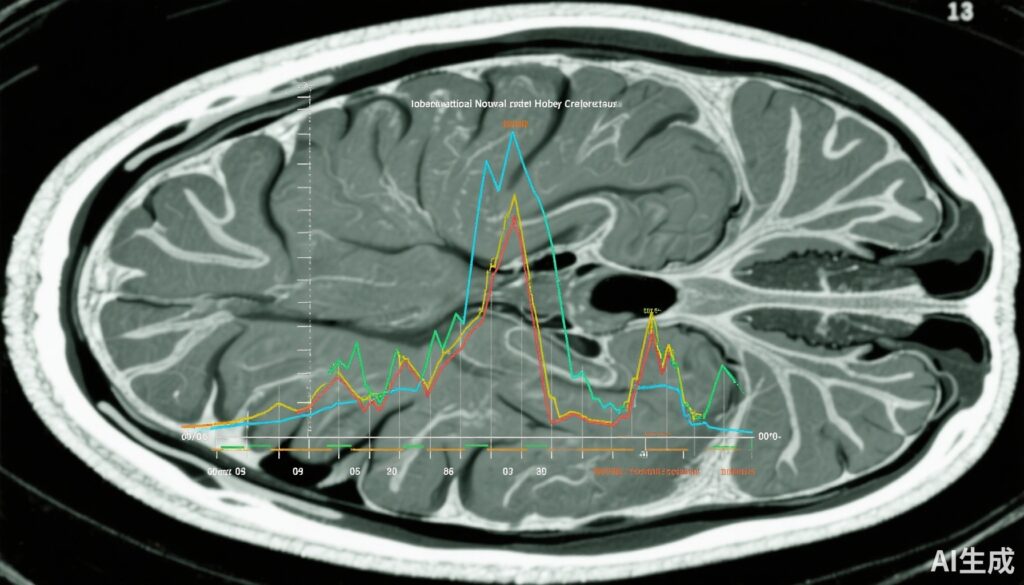Highlight
1. Shunting significantly improves gait velocity and balance in selected patients with idiopathic normal-pressure hydrocephalus (iNPH) who show improvement after temporary CSF drainage.
2. No significant cognitive or urinary symptom improvements were observed at 3 months post-shunting.
3. Safety profile reveals more subdural bleeding and positional headaches in the shunted group, whereas falls were more frequent in the placebo group.
4. This trial provides high-quality evidence supporting shunt surgery in appropriately selected iNPH patients.
Study Background and Disease Burden
Idiopathic normal-pressure hydrocephalus (iNPH) is a neurologic disorder predominantly affecting older adults, characterized by a clinical triad: impaired gait and balance, cognitive decline, and urinary incontinence. The etiology involves abnormal cerebrospinal fluid (CSF) dynamics leading to ventricular enlargement without elevated intracranial pressure. The gait disturbance profoundly impacts patients’ independence and quality of life, often preceding cognitive and urinary symptoms. Shunt surgery, which diverts excess CSF, is the standard intervention; however, its efficacy, especially regarding cognition and continence, has remained uncertain. This ambiguity has contributed to variability in clinical practice and patient selection. Thus, robust evidence from randomized controlled trials is essential to guide therapeutic decisions in iNPH management.
Study Design
This investigation was a double-blind, randomized, placebo-controlled trial enrolling 99 adults with iNPH. Participants were selected based on documented gait-velocity improvement after a temporary CSF drainage test, ensuring responsiveness to CSF removal. They were then randomized to one of two groups: open-shunt valve setting (opening pressure 110 mm H2O) enabling CSF diversion or placebo valve setting (opening pressure >400 mm H2O) effectively acting as a sham procedure. The shunts used were noninvasively adjustable, facilitating blinding. The primary outcome measured was change in gait velocity at 3 months post-surgery. Secondary outcomes included changes in the Tinetti scale (assessing gait and balance), Montreal Cognitive Assessment (MoCA) score for cognition, and Overactive Bladder Questionnaire assessing urinary incontinence. Safety and adverse events were rigorously monitored during the follow-up period.
Key Findings
At 3 months, 49 participants in each group were evaluated for gait velocity. The open-shunt group demonstrated a significant mean increase in gait velocity of 0.23 ± 0.23 m/s compared to a minimal 0.03 ± 0.23 m/s improvement in the placebo group, yielding a treatment difference of 0.21 m/s (95% CI, 0.12 to 0.31; P < 0.001). This magnitude of improvement has clinical relevance, correlating with enhanced mobility and reduced fall risk.
Similarly, Tinetti scale scores improved more in the open-shunt group than placebo (mean change 2.9 vs. 0.5 points; P = 0.003), supporting better gait stability and balance. However, cognitive function assessed by MoCA showed no statistically significant difference (mean changes 1.3 vs. 0.3 points). Likewise, urinary symptoms measured by the Overactive Bladder Questionnaire did not differ significantly (mean changes -3.3 vs. -1.5 points), indicating limited short-term benefit in these domains.
Safety data revealed a mixed profile. Falls were more frequently reported in the placebo group (46% vs. 24%), consistent with poorer gait outcomes. Cerebral bleeding events were equal (2% in each arm). The open-shunt group experienced higher rates of subdural bleeding (12% vs. 2%) and positional headaches (59% vs. 28%), known complications related to shunts and CSF diversion. These findings underscore the need for careful perioperative management and patient counseling regarding risks.
Expert Commentary
This landmark trial advances the evidence base for shunt surgery in iNPH by employing rigorous methodology, including patient selection based on objective CSF drainage responsiveness and a placebo-controlled design. The clear demonstration of gait and balance improvements affirms the benefit of shunting in carefully selected patients, addressing a long-standing clinical question. However, the lack of significant short-term cognitive and urinary symptom improvement suggests these domains may require longer follow-up or alternative therapies, or that they are less directly impacted by shunting.
Limitations of the study include the relatively brief 3-month follow-up period, which may underestimate late benefits or risks. The trial population—restricted by inclusion criteria requiring gait response to CSF drainage—may not represent all patients with iNPH, thus limiting generalizability. Additionally, adverse event profiles, notably subdural hematomas, demand vigilant monitoring. Future research should explore optimization of shunt settings, patient selection, and long-term outcomes including neurocognitive trajectories and urinary function.
Conclusion
This randomized controlled trial robustly confirms that shunt surgery significantly improves gait velocity and balance in iNPH patients responsive to CSF drainage, enhancing mobility and potentially reducing fall risk. The absence of short-term cognitive and urinary improvement underscores the complexity of symptom response in iNPH. Clinicians should balance the benefits in motor function with recognized surgical risks when counseling patients. Ongoing research is needed to refine indications and optimize comprehensive outcomes for this disabling but treatable condition.
References
Luciano MG, Williams MA, Hamilton MG, Katzen HL, Dasher NA, Moghekar A, Hua J, Malm J, Eklund A, Alpert Abel N, Raslan AM, Elder BD, Savage JJ, Barrow DL, Shahlaie K, Jensen H, Zwimpfer TJ, Wollett J, Hanley DF, Holubkov R; PENS Trial Investigators and Adult Hydrocephalus Clinical Research Network. A Randomized Trial of Shunting for Idiopathic Normal-Pressure Hydrocephalus. N Engl J Med. 2025 Sep 16. doi: 10.1056/NEJMoa2503109. Epub ahead of print. PMID: 40960253.



